Daily life, in the process of excavation, provides news about the elements discovered at the site. For example, the mosaic floor cleaning helps to verify its basic scheme. In this case, the mosaic has a plant motif center framed by an octagon; whose sides, East and West, also have square caissons with plant motifs. The drawing is complete with lines forming wreathed swastikas. The colors of the tesselae are black, white, red (in different shades) and orange/yellow (also in different gradation).
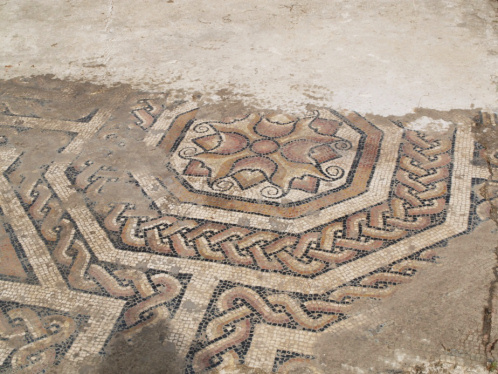 Central floral octagon limited by a rope motif.
Central floral octagon limited by a rope motif.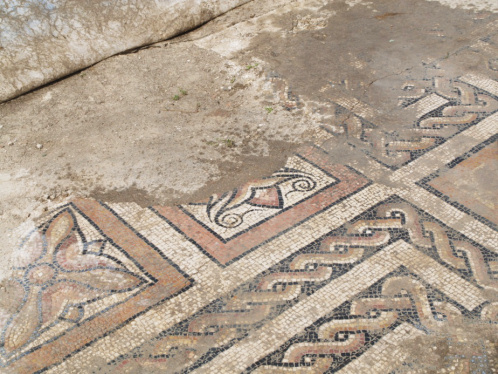 Floral square caissons that are arranged in the east and west sides of the pavement.
Floral square caissons that are arranged in the east and west sides of the pavement.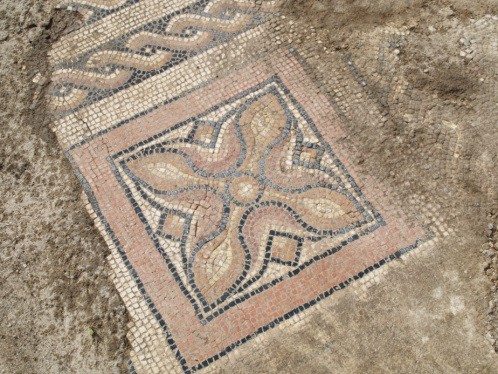 An image of one of the square caissons.
An image of one of the square caissons.Regarding the rest of the excavated space, the area that is considered as probably belonging to an old hermitage is now is free of the silt levels (which enshrine it). It has revealed the existence of entombments within granite sarcophagi corresponding to the oldest time that this space was used, but this appreciation can’t be determined until the end of the excavation.
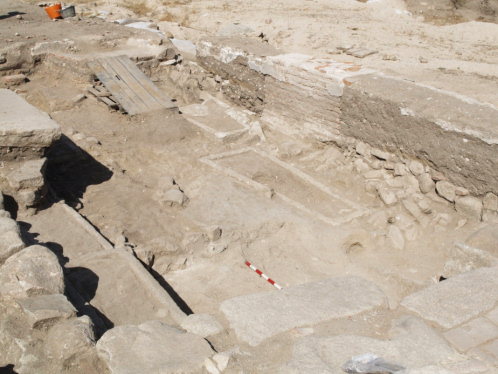 Chapel area. We can observe different coffins, disposed therein.
Chapel area. We can observe different coffins, disposed therein.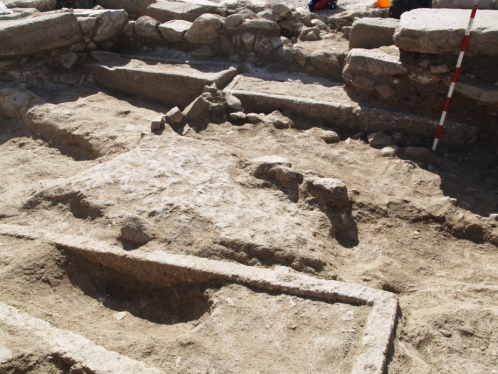 Photo of one of these burials, without exhuming.
Photo of one of these burials, without exhuming.Translated by Lara M. Moreda
Edited by Andrew B. Greeves
Edited by Andrew B. Greeves



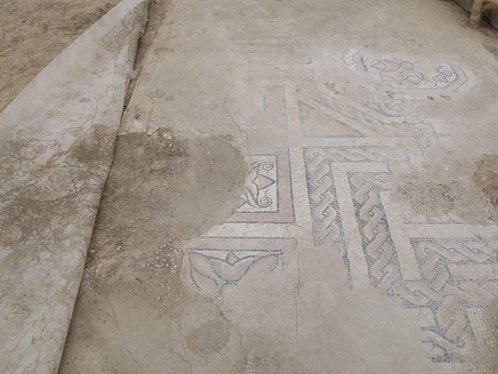 Polychrome mosaic floor decorated with geometric motifs. We can see that the conservation of the pavement is good, despite the existence of some "gaps".
Polychrome mosaic floor decorated with geometric motifs. We can see that the conservation of the pavement is good, despite the existence of some "gaps".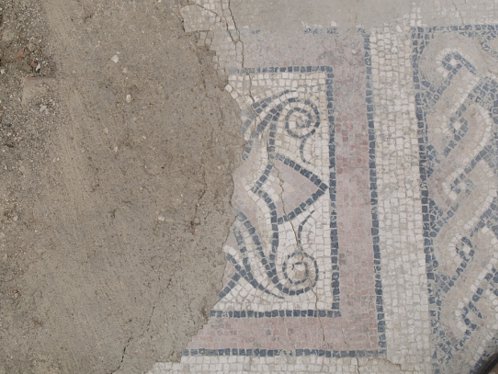
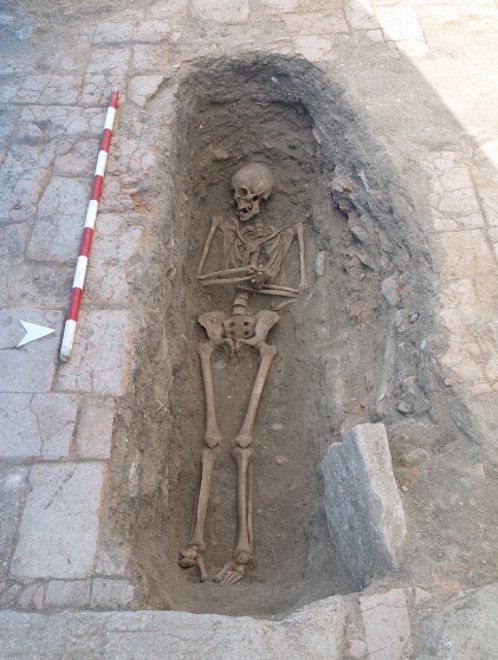 This photo is of one of the burials. This is an adult in the supine position. Facing West-East (head-feet), upper limbs are bent and hands together, resting on the abdominal area.
This photo is of one of the burials. This is an adult in the supine position. Facing West-East (head-feet), upper limbs are bent and hands together, resting on the abdominal area.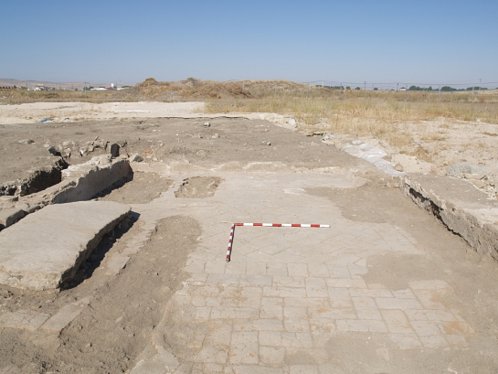 View of the possible chapel. There is clay tile pavement, also practiced burial pits can be identified.
View of the possible chapel. There is clay tile pavement, also practiced burial pits can be identified.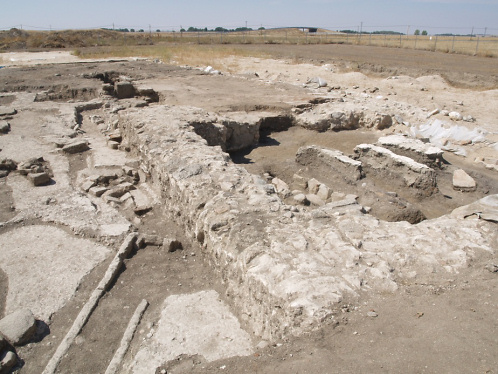
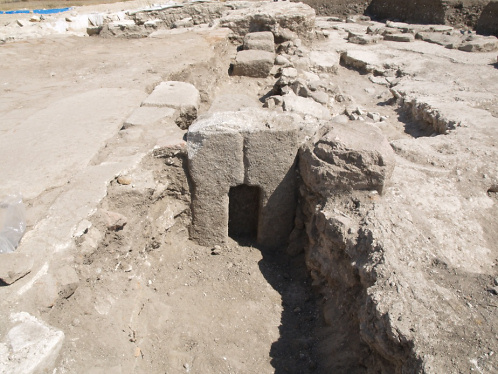 This photo is of of a stone object (called Cupa) that has a deposit to introduce the ash, and also has a libations channel.
This photo is of of a stone object (called Cupa) that has a deposit to introduce the ash, and also has a libations channel.